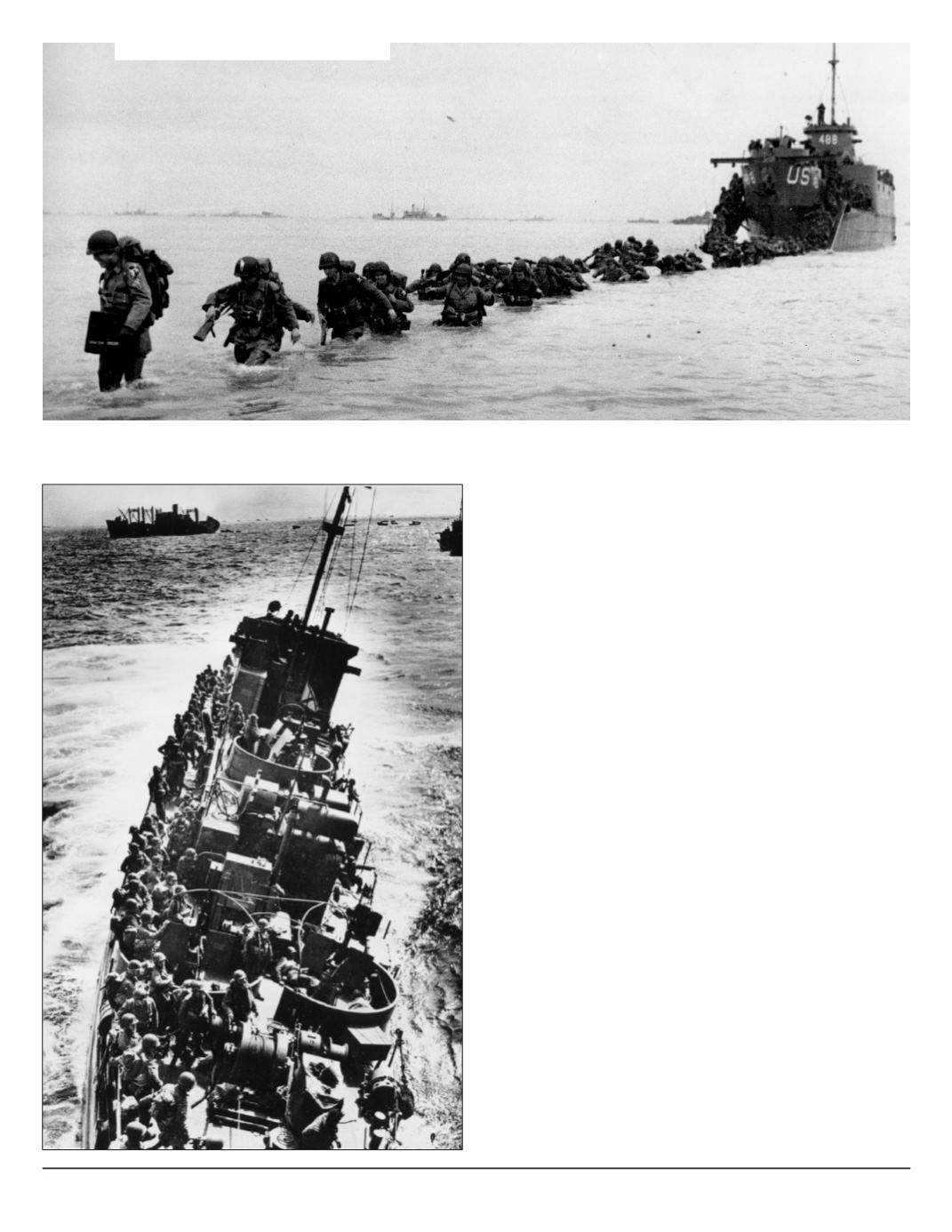

Time Lines 19
A U.S. Coast Guard LCI, heavily listing to port,
moves alongside a transport ship to evacuate her
troops, during the initial Normandy landing opera-
tions in France, on June 6, 1944. Moments later
the craft will capsize and sink. Note that helmeted
infantrymen, with full packs, are all standing to
starboard side of the ship. (AP Photo)
U.S. reinforcements wade through the surf from a landing craft in the days following D-Day and the Allied
invasion of Nazi-occupied France at Normandy in June 1944 during World War II. (AP Photo/Bert Brandt)
According to the Library of Congress, at about 3
a.m. on D-Day, on the four-meter swells of the English
Channel, Allied troops transferred to those landing
craft, some twelve miles off the French coast. British
troops headed left toward Caen, the Americans right
toward Utah and Omaha beaches nearer Cherbourg,
and the Canadians to Juno Beach.
For the Americans, Omaha was a near-suicide mis-
sion. First, a powerful undertow swept away lives
and weapons; ten landing craft with twenty-six artil-
lery guns and twenty-two of twenty-nine tanks were
swamped. Then, they faced a maelstrom of bullets.
Within ten minutes of landing every officer and ser-
geant of the 116th Regiment was dead or wounded.
Yet, by 10 a.m., as Americans received the first news
of D-Day, 300 men had struggled through mortar fire,
across the body and equipment strewn beach, and up
a bluff to attack the German defenses. By nightfall,
the Allies had a toehold on the continent, yet, on
“Bloody Omaha” alone, 3,000 Americans lay dead.
Legendary Associated Press reporter Ernie Pyle,
who would later die in the war, covered the invasion.
“All that remained on the beach was some sniping
and artillery fire, and the occasional startling blast
75 Years Ago - The D-Day Invasion


















